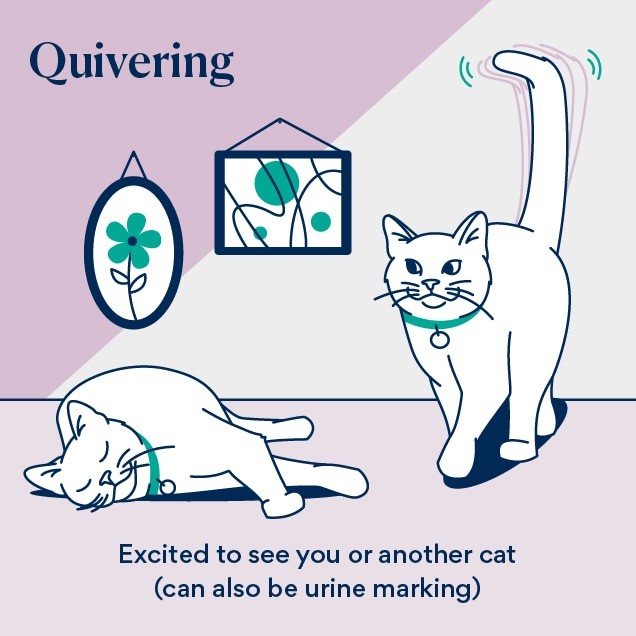Cats are known for their subtle yet expressive body language. While their eyes might be windows to their soul, their tails often hold the key to understanding their current mood and intentions. One particular tail movement that often puzzles cat owners is the quiver. So, Why Do Cats Quiver Their Tails? Let’s delve into the fascinating world of feline tail language and uncover the meaning behind this intriguing behavior.
Understanding the Quivering Tail
A tail quiver isn’t just a random twitch; it’s a specific signal with a distinct meaning. Often, a cat will quiver its tail when experiencing intense excitement or anticipation. This could be triggered by:
- Seeing their beloved owner: A quivering tail accompanied by purring and meows can be a cat’s way of expressing overwhelming joy at your return.
- Greeting a feline friend: Cats may also quiver their tails when interacting with other cats they are fond of. This behavior signifies a friendly and playful interaction.
- Anticipating a treat or meal: If your cat knows it’s feeding time, or if you’re holding a tasty treat, a tail quiver could indicate their eager anticipation.
Differentiating the Quiver from Other Tail Movements
It’s important to distinguish a tail quiver from other similar movements that convey different messages:
-
Thrashing: A rapidly thrashing tail signifies agitation, irritation, or even anger. This is a clear warning sign to give your cat space.
-
Twitching: A slight twitching at the tip of the tail often indicates focus and concentration, especially when hunting or playing.
-
Swishing: A slow, deliberate swishing of the tail can signal that a cat is feeling playful or assessing a situation.
-
Puffed Up: A puffed-up tail, often accompanied by an arched back, indicates fear or aggression. The cat is trying to appear larger to intimidate a perceived threat.
The Quiver and Spraying: A Potential Connection
While a tail quiver usually signals positive excitement, there’s one exception. If a cat quivers its tail while backing up against a vertical surface, especially with its tail held high, it might be engaging in spraying behavior. This is a territorial marking behavior and not necessarily related to excitement.
Observing the Whole Picture
Tail language is just one aspect of feline communication. To accurately interpret your cat’s emotions, it’s crucial to consider other cues, such as:
- Ear position: Forward ears indicate alertness and interest, while flattened ears suggest fear or aggression.
- Eye dilation: Dilated pupils can signal excitement, fear, or aggression.
- Vocalizations: Meows, purrs, hisses, and growls provide further insights into a cat’s mood.
- Body posture: A relaxed body indicates contentment, while a tense or crouched body suggests anxiety or fear.
Conclusion: The Tail Tells a Tale
Understanding why cats quiver their tails allows us to better connect with our feline companions. While a quivering tail most often expresses joy and excitement, context is key. By observing the entire picture – including other body language signals – we can more accurately decode our cats’ emotions and respond appropriately, strengthening the bond we share. A deeper understanding of cat communication enhances our ability to provide a loving and enriching environment for these fascinating creatures.

